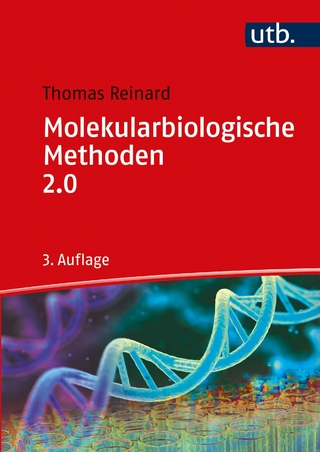Induced Pluripotent Stem Cells
Springer-Verlag New York Inc.
978-1-4614-2205-1 (ISBN)
Sibel Yildirim is an associate professor at the Faculty of Dentistry, Department of Pediatric Dentistry, University of Selcuk, Konya, Turkey. She has been lecturer and practising dentistry at the university for years. Her colleagues and she have established the first multi-disciplinary, dental/oral research centre in Turkey. She has authored many papers in international journals and has completed several research projects. Along with her pediatric dentistry PhD, she has also her second PhD on histology and embryology. Her research interests include the role of cytokines on deciduous tooth resorption, the viral ethiopathogenesis of pulpal/periapical diseases of deciduous teeth and vital pulpal therapies using recombinant human proteins or gene therapy. Accordingly, she has led some experiments on deciduous tooth pulp tissue and her team obtained important results showing high regulatory capacity of dental pulp cells on the events of deciduous tooth resorption or retention. She had a change to study with the indisputable leaders in the dental engineering field in Japan, Switzerland and the United States. She has become an expert for stem cells from the pulp tissue of deciduous and permanent teeth. She and her colleagues showed dental pulp tissue stem cells have some clear differences than mesenchymal stem cells obtained from umbilical cord stroma. In addition to her dental tissue engineering studies she has pursued re-programming experiments in Geneva. In this part of her studies, she tried to generate the induced pluripotent stem cells (iPSCs) from deciduous vs. permanent dental pulp stem cells, as well as periodontal ligament cells and oral keratinocytes. She could observe that stem cells that have dental origin displayed strong potential for reprogramming. She believes comprehensively that isolating epithelial and mesenchymal stem cells from deciduous teeth and turning them to iPSCs will point toward novel venues for in situ restoration of dental tissue repair. As a pediatric dentist and histologist and embryologist, she does believe she has really powerful tool for understanding cell biology. After long years of experience in academic fields in three different continents she has found herself that she became a student again who is keen to reach beyond the traditional boundaries of biology. After she read Sui Huang’s and Stuart Kaufman’s marvelous manuscripts, she totally convinced that biocomplexity is the only field that helps to achieve her goals; moving one step closer to understanding life.
Induced Pluripotent Stem (iPS) cells are mature cells that have been genetically reprogrammed so that they return to their embryonic state. It is not yet known if iPS stem cells and embryonic stem cells differ significantly. Today many fundamental belief systems in biology are shifting towards accepting that mature body cells can be reverted to an embryonic state without the help of eggs or embryos. With their changed identities, iPS cells are then ready to serve as new tools for research in the fields of disease pathogenesis, drug discovery, oncology, and cell transplantation. One example of this would be using iPS from a patient’s mature cells to repair damaged tissue; it is thought that there would be very low incidence of rejection of the ‘new’ tissue in these cases. For the last four years, this therapeutic promise has been studied by hundreds of researchers worldwide in an effort to understand the ability of these cells to reverse their biological clocks.
Table of contents:
Introduction.- Pluripotent Cells.- Pluripotent Cells.- Transcriptional Networks and Signaling Pathways of Pluripotency.- Induced Pluripotent Stem Cells (iPSCs).- Generation the First iPSCs.- Reprogramming.- Molecular Mechanisms of Pluripotency.- Steps in Reprogramming.- Mechanisms in Reprogramming.- Dynamics of Direct Reprogramming.- Epigenetic Modifications.- Similarities and Differences between iPSCs and ESCs.- Modeling Disease in a Dish.- Disease Specific iPSCs.- Choosing Cell Sources.- Identification of iPSC Colonies.- Characterization of Genetic Mutation.- iPSCs Differentiation into Desired Cell Types.- Challenges to Therapeutic Potential of Human iPS Cells.- Is Reprogramming Necessary for Regenerative Therapies?.- New Approach to Understand the Biology of Stem Cells.- Health vs. Disease.- Changed Paradigm: Reprogramming as Rare but Robust Process.- From Reductionism to Wholeness.- More Future Considerations.- Conclusion.
| Reihe/Serie | SpringerBriefs in Stem Cells |
|---|---|
| Zusatzinfo | 5 Illustrations, color; 3 Illustrations, black and white; VIII, 73 p. 8 illus., 5 illus. in color. |
| Verlagsort | New York, NY |
| Sprache | englisch |
| Maße | 155 x 235 mm |
| Themenwelt | Naturwissenschaften ► Biologie ► Genetik / Molekularbiologie |
| Naturwissenschaften ► Biologie ► Zellbiologie | |
| Technik ► Umwelttechnik / Biotechnologie | |
| Schlagworte | Pluripotent • Stem Cells • Yildirim |
| ISBN-10 | 1-4614-2205-1 / 1461422051 |
| ISBN-13 | 978-1-4614-2205-1 / 9781461422051 |
| Zustand | Neuware |
| Haben Sie eine Frage zum Produkt? |
aus dem Bereich




